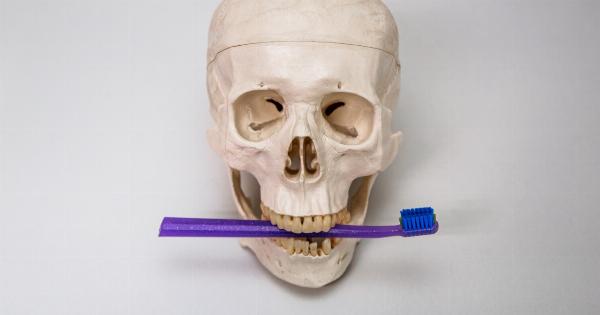As we age, our bodies undergo numerous changes, some of which can increase the risk of bone fractures. Bones play a crucial role in our everyday activities, from providing support and protection to enabling movement.
However, as seniors, our bones become more fragile and prone to fractures, leading to a decrease in independence and quality of life. In this article, we will explore the common risks for seniors when it comes to bone fractures and discuss preventive measures to maintain strong and healthy bones.
The Importance of Bone Health
Before delving into the risks and preventive measures, it’s essential to understand the significance of bone health and its impact on our overall well-being.
Bones are living tissues that continuously renew themselves through a process called remodeling. However, as we age, this remodeling process slows down, leading to an imbalance between bone formation and breakdown.
Good bone health is crucial not only for mobility but also for maintaining proper bodily functions.
Bones provide structural support to muscles and internal organs, protect vital organs from injury, and store essential minerals like calcium and phosphorus. Moreover, bones act as a reservoir for producing new blood cells, playing a significant role in the body’s immune system.
The Risks for Seniors
1. Osteoporosis
Osteoporosis is a common condition among seniors, especially women, where bones become weak and brittle. With age, our bodies tend to absorb less calcium and lose more bone mass than they create, resulting in porous and fragile bones.
Osteoporosis makes bones more susceptible to fractures, even from minor falls or injuries that would not typically cause harm.
2. Reduced Bone Density
As we grow older, the density of our bones decreases, making them more susceptible to fractures. Lower bone density is a consequence of various factors, including hormonal changes, vitamin deficiencies, lack of exercise, and certain medications.
Bones, particularly in the spine, hips, and wrists, become more vulnerable and prone to breakage.
3. Falls
One of the primary risks for seniors when it comes to bone fractures is falling. A simple fall can have severe consequences, leading to fractures in the wrists, arms, hips, or spine.
Factors such as impaired balance, muscle weakness, reduced vision, and medication side effects contribute to an increased likelihood of falls in older adults.
4. Age-Related Comorbidities
Several age-related health conditions can also increase the risk of fractures in seniors. Chronic conditions like osteoarthritis, rheumatoid arthritis, and cancer weaken the bones and make them more prone to fractures.
Additionally, conditions that affect cognition and balance, such as Alzheimer’s disease or Parkinson’s disease, further increase the risk of falls and subsequent fractures.
5. Medications
Both prescription and over-the-counter medications can impact bone health and increase the risk of fractures in seniors. Some medications, such as corticosteroids, reduce bone density over time, making bones weaker and more susceptible to fractures.
It is crucial for seniors to stay informed about the potential side effects of their medications and consult with healthcare professionals regarding bone health.
Preventive Measures for Strong Bones
Although the risk of bone fractures increases with age, there are various preventive measures seniors can take to maintain strong and healthy bones.
By incorporating these habits into their lifestyle, seniors can reduce the risk of fractures and promote overall bone health.
1. Adequate Calcium and Vitamin D Intake
Calcium is vital for maintaining bone density, and vitamin D helps the body absorb calcium properly. Seniors should consume foods rich in calcium, such as dairy products, dark leafy greens, and fortified cereals.
Additionally, spending time outdoors and getting enough sunlight exposure helps the body produce vitamin D naturally. Supplements may also be recommended by healthcare professionals to ensure sufficient calcium and vitamin D intake.
2. Regular Weight-Bearing Exercise
Engaging in weight-bearing exercises can enhance bone density and strength. Activities like walking, dancing, lifting weights, and climbing stairs put pressure on the bones, stimulating them to become stronger.
Seniors should consult with healthcare professionals to develop an exercise routine suitable for their fitness level and overall health condition.
3. Fall Prevention Strategies
Minimizing the risk of falls is crucial to prevent fractures in seniors.
Simple measures such as removing hazards at home, installing grab bars in bathrooms, wearing appropriate footwear, and using walking aids if necessary can significantly reduce the likelihood of falls. Regular eye check-ups and maintaining an active lifestyle to improve balance and coordination are also essential.
4. Regular Bone Density Testing
Seniors, particularly women over the age of 65, should undergo regular bone density testing to assess their bone health and identify potential risks.
Dual-energy X-ray absorptiometry (DEXA) scans are commonly used to measure bone mineral density and diagnose osteoporosis. Early detection of bone loss can help healthcare professionals intervene promptly and recommend appropriate treatments.
5. Medication Management
If seniors are taking medications that may weaken their bones, it is vital to discuss potential alternatives or preventive measures with healthcare professionals.
They can evaluate the risks versus benefits of medications and suggest alternatives or complementary therapies to minimize the impact on bone health.
The Bottom Line
Safeguarding bone health is essential for seniors to maintain their independence and overall well-being.
Understanding the risks for bone fractures, such as osteoporosis, reduced bone density, falls, age-related comorbidities, and medications, can help seniors and their caregivers take necessary precautions.
By implementing preventive measures like ensuring adequate calcium and vitamin D intake, engaging in regular weight-bearing exercises, preventing falls, undergoing bone density testing, and managing medications, seniors can promote and maintain healthy bones, ultimately reducing the risk of fractures.






























